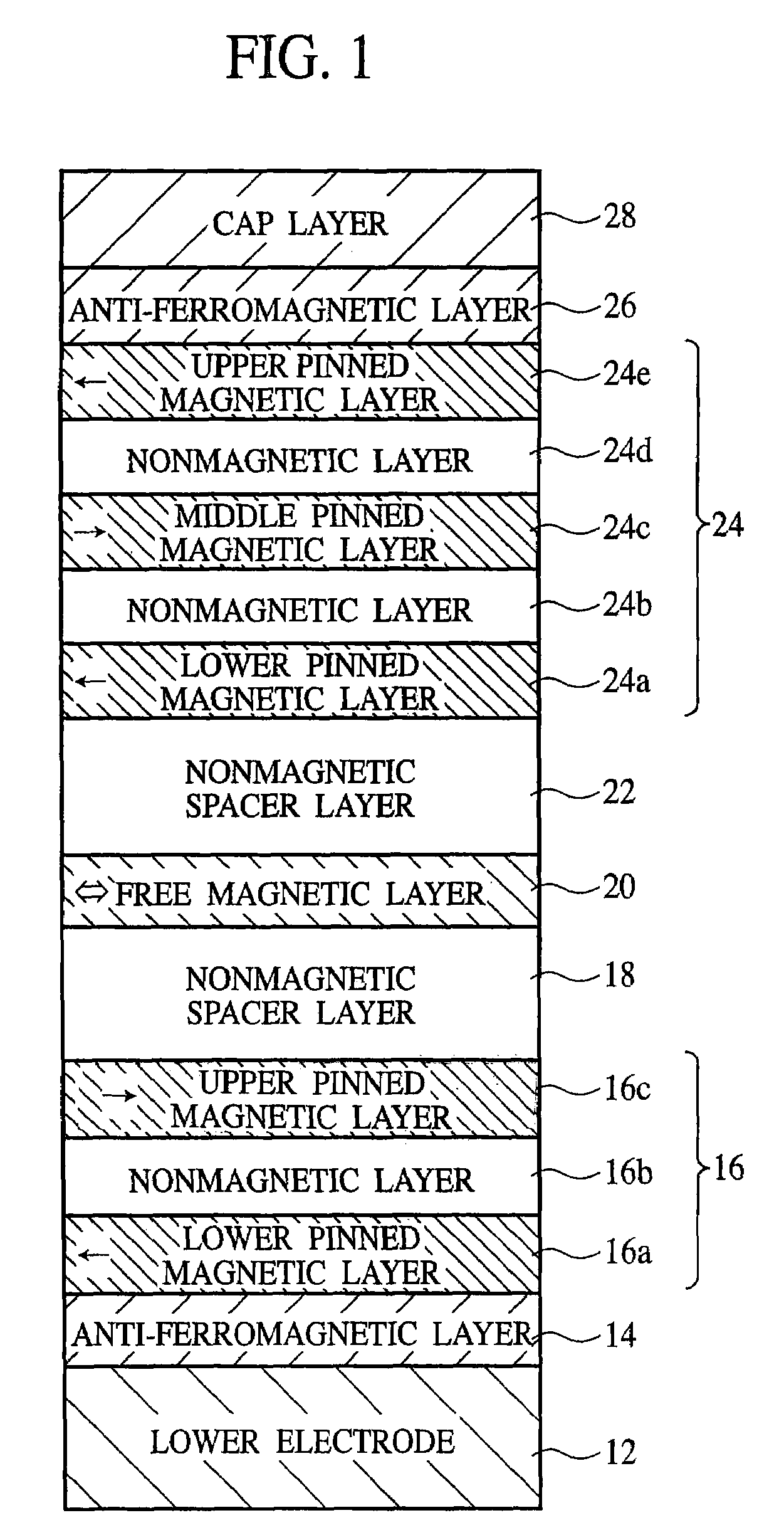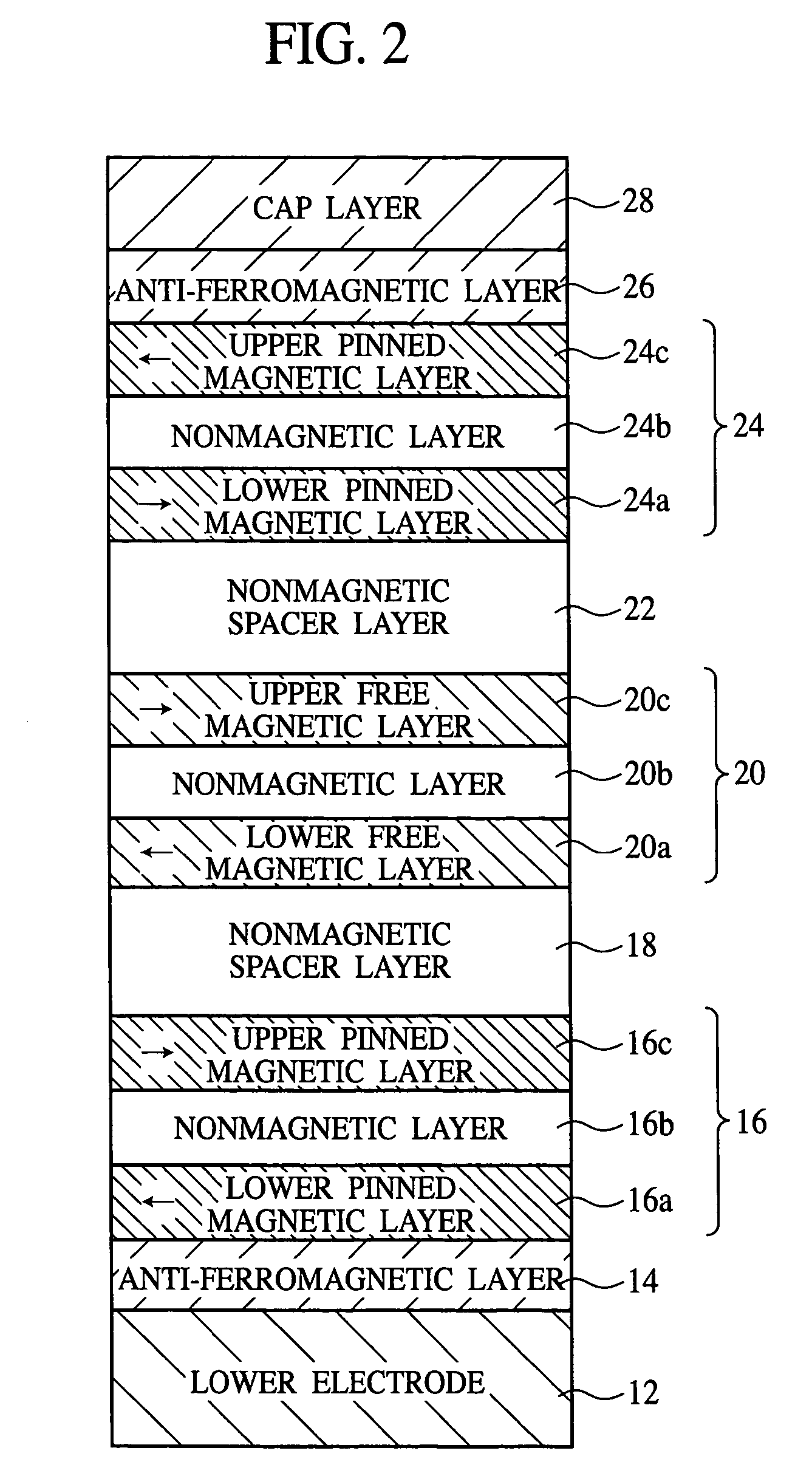Magnetoresistive effect element and magnetic memory device
a magnetic memory device and effect element technology, applied in information storage, static storage, digital storage, etc., can solve the problems of increased electric power consumption, increased write current, and defective write, and achieve good symmetry, large resistance change, and reduced magnetization reversing current
- Summary
- Abstract
- Description
- Claims
- Application Information
AI Technical Summary
Benefits of technology
Problems solved by technology
Method used
Image
Examples
second embodiment
A Second Embodiment
[0134]The magnetoresistive effect element and the method for fabricating the same according to a second embodiment of the present invention will be explained with reference to FIGS. 10, 11A-11B and 12A-12B. FIG. 10 is a diagrammatic sectional view showing a structure of the magnetoresistive effect element according to the present embodiment. FIGS. 11A-11B and 12A-12B are sectional views of the magnetoresistive effect element according to the present embodiment in the steps of the method for fabricating the same, which show the method. The same members of the present embodiment as those of the magnetoresistive effect element and method for fabricating the same according to the first embodiment are represented by the same reference numbers not to repeat or to simplify their explanation.
[0135]First, the structure of the magnetoresistive effect element according to the present embodiment will be explained with reference to FIG. 10.
[0136]As shown, a lower electrode 12 ...
third embodiment
A Third Embodiment
[0174]The magnetic memory device and the method for fabricating the same according to a third embodiment of the present invention will be explained with reference to FIGS. 13, 14A-14C, 15A-15B and 16A-16B. FIG. 13 is a diagrammatic sectional view showing a structure of the magnetic memory device according to the present embodiment. FIGS. 14A-14C, 15A-15B and 16A-16B are sectional views of the magnetic memory device according to the present embodiment in the steps of the method for fabricating the same, which show the method. The same members of the present embodiment as those of the magnetoresistive effect element and the method for fabricating the same according to the first embodiment are represented by the same reference numbers not to repeat or to simplify their explanation.
[0175]First, the structure of the magnetic memory device according to the present embodiment will be explained with reference to FIG. 13. The magnetic memory device according to the present ...
PUM
 Login to View More
Login to View More Abstract
Description
Claims
Application Information
 Login to View More
Login to View More - R&D
- Intellectual Property
- Life Sciences
- Materials
- Tech Scout
- Unparalleled Data Quality
- Higher Quality Content
- 60% Fewer Hallucinations
Browse by: Latest US Patents, China's latest patents, Technical Efficacy Thesaurus, Application Domain, Technology Topic, Popular Technical Reports.
© 2025 PatSnap. All rights reserved.Legal|Privacy policy|Modern Slavery Act Transparency Statement|Sitemap|About US| Contact US: help@patsnap.com



